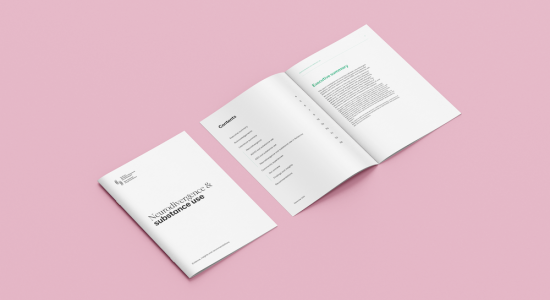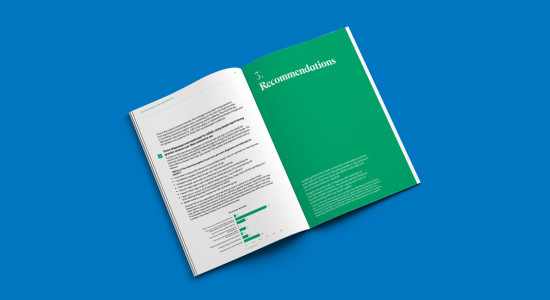Way forward charted at Tūturu Summit

The Drug Foundation shared what was learnt from a school-based project aiming to change the way schools and services approach drugs and alcohol. John McRae attended the Wellington Summit this February.
In a week when government ministers were locked in urgent talks over a different health crisis, educators met at Parliament to address the impact of alcohol and other drugs on our rangatahi. 160 delegates from across the country attended the Tūturu Summit, sharing their learnings about harm minimisation through effective, school-wide approaches.
Many of the schools and agencies represented at the Summit had helped to create Tūturu, a co-creation of the NZ Drug Foundation, educators and health professionals, and overseen by the Ministry of Education, Ministry of Health, Health Promotion Agency and NZ Police.
Although Tūturu’s focus was initially on young people, alcohol and drugs, it quickly developed a broader view.
“As we rolled out Tūturu, it rapidly became apparent that we needed to be looking at the wider role of schools in helping young people make good decisions about the things they do in their lives,” says Jim Matheson, Drug Foundation Board member.
“So the focus of Tūturu moved from substances to the core purpose and role of school – and that has to be about helping kids learn for a future in which they have the skills, knowledge and attitudes to look after themselves.”
Over the 2 days of the Summit, several schools involved in the pilot shared their journey in adopting change. Some had joined Tūturu because of an immediate need to address issues of alcohol and other drugs in their school populations. Others became involved as part of a longer-term strategy to improve student wellbeing.
“We’d reached a point where we decided to ask for external help,” says one deputy principal. “We had the idea that we might find an expert who could tell our whole assembly that drugs are bad, drugs are dangerous and for losers. We hoped that this might convince students. Instead, we were referred to Tūturu and learned there was no quick fix.”
Tūturu-branded purple illustration with heads, speech bubbles and cogs. - Imagery from the Tūturu website.
All pilot participants soon arrived at the same conclusion – that student wellbeing could not be treated as an add-on or extra part of a school’s work. Wellbeing had to be central, embedded in the curriculum and the day-to-day business of the school.
Schools used the Tūturu reflection tool to assess what they were doing and what areas might require attention. The reflection tool takes a comprehensive view:
It addresses a school’s values and how visible these are in everything from policies to teaching plans.
It considers levels of student connectedness. What strategies are being used to promote connectedness across the whole student population, both in and out of class?
It asks how the school affirms the mana of Māori students and uplifts Māori voices.
The tool asks what wellbeing initiatives operate in the school, what data is collected and how it is used. It considers the place of student voice in the school and how that informs the school’s health and wellbeing practice.
In terms of alcohol and other drug education, schools consider how effective, pedagogically sound and extensive it is.
The tool addresses school support systems and their links to outside agencies.
Finally, it asks whether the school is focused on building a positive environment.
Each Summit presenter addressed one or more of the factors, describing how they had grappled with change to arrive at a better place.
Huntly College students described their school’s focus on cultural shift to build positivity, increase connectedness and enhance student voice.
“At our school, students can be authentic, be themselves and find something to do that they love,” said a young presenter.
“School’s a really positive place,” added another. “Teachers aren’t caught up on distractions, like whether your uniform is perfect. What’s important to teachers and students is whether you are doing OK, whether you’re in class and an engaged learner.”
“Our school is a school for leaders,” said one student as others nodded. “At Huntly College, students play a big part in deciding what happens, including what we learn.”
This championing of student voice was a recurring theme of the Summit, beginning with Judge Andrew Becroft’s opening address.
“If we really want to improve education outcomes, we need to get input from the people it affects most directly – children and young people,” said the Children’s Commissioner and shared a student quote: “I am a library. Quiet but filled with knowledge. It’s dumb that I’m not asked.”

Judge Andrew Becroft holding a mic as he addresses the audience, with Tūturu logo showing on the podium - Judge Andrew Becroft addresses the summit. Photo credit: NZ Drug Foundation
Moves to embed health and wellbeing in the wider curriculum were described at the Summit. While schools may have begun their Tūturu journey with discussion around alcohol and other drugs, they soon began to think quite strategically about how to weave wellbeing throughout the school. At Otago Girls’ High School, a decision was made to enhance the amount of planned learning around wellbeing at years 9 and 10.
“We made a deliberate decision to start early,” says Assistant Principal Bridget Davidson. “Rather than waiting, we wanted our younger students to start grappling with the issues so they could develop understandings and critical thinking skills.”
In response to schools making curriculum change, Tūturu has worked to develop resources.
“We’ve certainly seen value in the curriculum-based approaches,” says Matheson. “We have developed resources for use in various subjects. Some help teachers to feel competent in talking to kids about things outside their subject area. We now have a suite of resources that help teachers have better conversations about drugs and alcohol.”
Davidson says the Tūturu resources have been invaluable. The school has often modified them to suit its own context or used ideas as a basis for the development of a local resource.
The Tūturu Summit focused strongly on schools building responsiveness to the needs of Māori students, who are disproportionately represented in negative wellbeing figures.
Kataraina Davis, a specialist in youth development and cultural competence, challenged those present to analyse what they knew about their Māori students and how strongly a Māori perspective was represented in the kaupapa of their schools. She asked that schools actively create places where rangatahi feel a sense of belonging, where their mana is uplifted and their voices heard. She reminded the audience that Māori conceptions of leadership and health are different from mainstream views and have to be woven into the fabric of the school.
Alongside issues of school curriculum and culture, the Tūturu Summit placed considerable emphasis on building pastoral pathways for students that would help them learn self-management skills. Integral to this is the role of the classroom teacher, creating a space where young people can bring their whole selves into the conversation. Always, however, classroom teachers operate within a highly developed pastoral care structure. These vary according to the differing contexts of the schools.
"We want them to see that we are caring and restorative and, where we can be, inclusive and engaging."
Waiheke High School Deputy Principal Tony SearsRichard Talbot from multicultural Aorere College in South Auckland described the operation of a web of pastoral care within the school. Teachers and students are supported by deans, guidance counsellors, social workers, nurses and an attendance officer. These on-site professionals partner with a range of outside agencies to provide specialist assistance.
“Our teachers know their students well, and we encourage them to let us know of any concerns that arise,” says Talbot. “If students are out of sorts, withdrawn, have low mood or anger, teachers let us know, and we work to support the student. We don’t expect teachers to take lone responsibility, but they are a vital part of pastoral care.”
In response to schools’ need, Tūturu has developed some support plan templates for schools to use. These templates might involve student critical thinking, restorative practice and include regular review and next steps. They may involve work with agencies and engagement with family and whānau.
Ben Birks Ang, Deputy Director – Programmes at the Drug Foundation, says that, even if students initially deflect, saying they’re fine, the fact that they are asked if they’re OK by two or three teachers increases the likelihood of them reflecting on their wellbeing while feeling part of a supportive community.
Pilot schools and service providers both agreed that the Tūturu philosophy is the correct one – alcohol and other drug education has to be part of a whole-school approach to student wellbeing. That means wellbeing must permeate the curriculum and the day-to-day operation of the school.
Achieving this is not simple. In some contexts, attempting to rehabilitate students rather than exclude them has reputational risks for schools. Waiheke High School Deputy Principal Tony Sears says that he’s hopeful implementing Tūturu will convince the community that the school is not soft on drugs.
“Rather, we want them to see that we are caring and restorative and, where we can be, inclusive and engaging.”
While community doubts have to be confronted, the leadership and teaching staff in the school must also be convinced that the programme isn’t yet another demand on time and workload that will take them away from ‘core business’.
“Tūturu has been quite successful in shifting those perceptions,” says Matheson. “It has shown that it’s not about doing more, but about changing how you do things. It’s about making young people’s wellbeing the core business and building curriculum and culture that demonstrates that.”
Growing success can only be achieved by a core of committed and visionary leaders who build a large, committed team around them. It is not enough to have a few people driving the change. Staff turnover and high workloads are the greatest threat to the programme in the early period of adoption.
At Otago Girls’ High School, parts of the programme were strategically spread across the senior management team, and groups of teachers from across the curriculum were brought on board. Nevertheless, Davidson says that, if the school was to start the roll-out again, she would have school-wide professional development early on to grow understanding and enthusiasm more quickly. While change takes time to become embedded in the fabric of a school, students respond to changes quickly, she says.
All participants acknowledged that, particularly in the early period of the roll-out, Tūturu workers attached to each school provided invaluable support and coaching.
“Tūturu is a genuine pilot,” says Matheson. “We don’t go in with ready answers to everything. We start with an approach and work with schools on how to apply it in their particular context.”
“The regular meetings are very helpful,” says Davidson. “They’re always affirming. We chat about how things are going and what we might try next. Having that local alcohol and other drug service provider person is critical.”
In parallel with the piloting of Tūturu, research has been undertaken. Early findings show that schools involved in the pilot have made deep changes and that the changes are making a positive impact for students. The challenge now, according to Matheson, is to identify what are the keys to success. As the programme grows, should some parts be given more weight than others, and most critically, can the successes of Tūturu be spread across the whole schooling system?
“We know that’s not easy in the New Zealand context,” he says. “Taking successful innovation from a few places and making that a general thing has long been a problem.” Matheson says that the recent release of the draft National Education and Learning Priorities (NELP) is a cause for some optimism, as the document states that wellbeing is fundamentally entwined with learning. The priorities also promote the voice of learners and whānau and make it incumbent on schools to remove any barriers that may impede access to education.
“What Tūturu has been saying is now being reinforced by a shift in the national expectations for schools. They’re not in place yet, but they are signalled, and that could be very helpful in moving schools down the road towards adopting a wellbeing focus.”
Find out more about Tūturu here.
Recent news

Untreated ADHD leading to addiction and drug harm
A new report shows New Zealand’s failure to adequately diagnose and treat ADHD is likely leading to significant drug harm, including from alcohol and nicotine.

Report: Neurodivergence and substance use
Our latest report pulls together international evidence and local experiences of how neurodivergence impacts drug use

What researchers at University of Auckland are learning from giving people microdoses of LSD
‘Microdosing’ psychedelics involves taking small, repeated doses of a psychedelic drug. Researcher Robin Murphy talks us through the latest Auckland University microdosing study.

